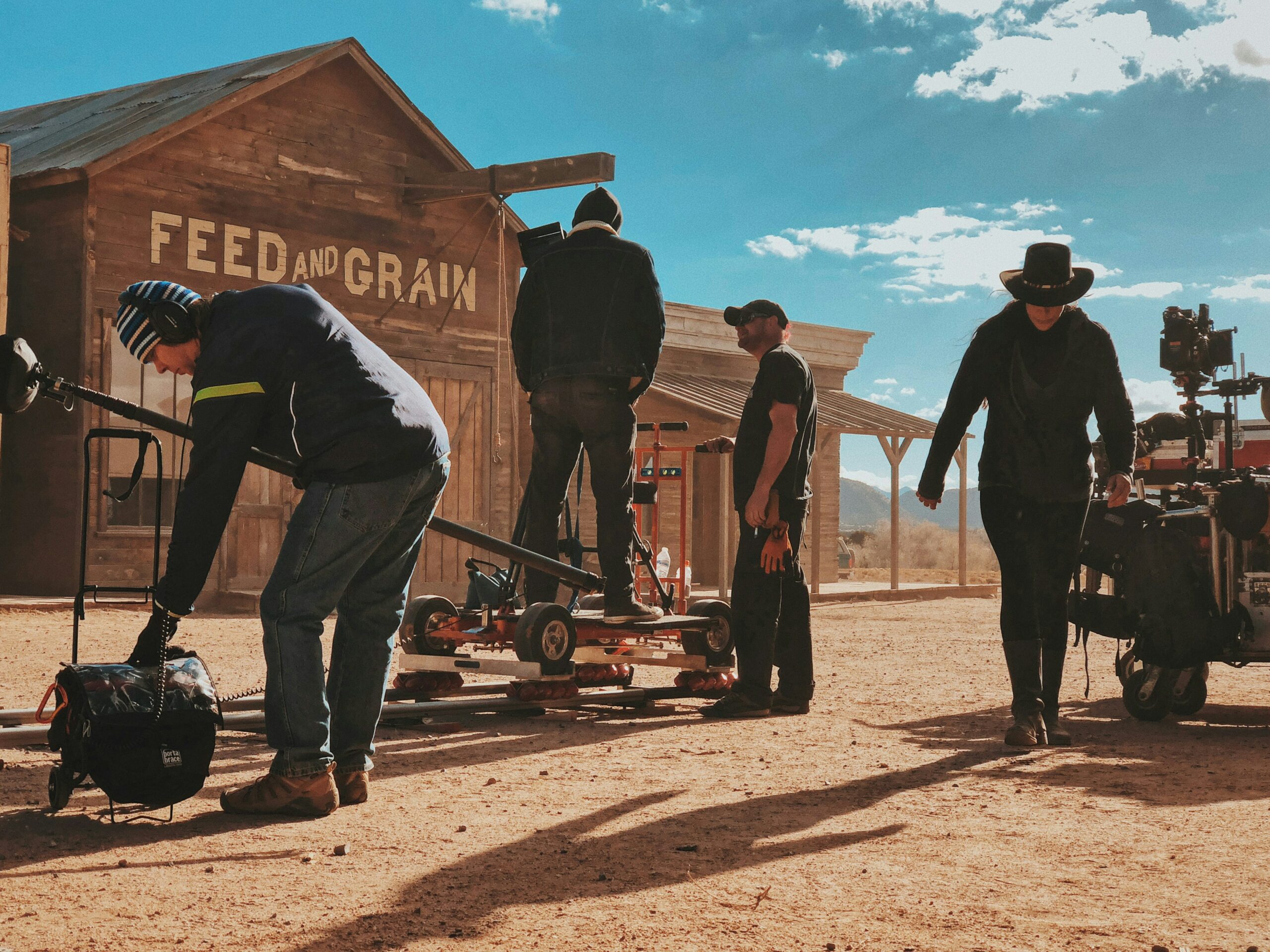Are you looking to film in another country but don’t know where to start? No worries! Whether you’re an experienced producer or a newcomer in the audiovisual field, planning a production abroad requires careful preparation and attention to detail.
This article provides a comprehensive checklist to help you avoid common pitfalls and ensure the success of your project. Learn the best practices for securing filming permits and selecting the perfect locations while considering technical and aesthetic factors.
Ready to make your international project a success? Follow this guide!
Table des matières
Research local filming regulations
Different regions may have specific laws you need to follow. Here are some of the regulations to consider before traveling to another country:
- Filming permit: You’ll likely need to obtain a permit to film in public or private locations.
- Equipment restrictions: Certain limitations may apply to the use of specific equipment like drones, requiring permits.
- Liability insurance: You will probably need to provide proof of insurance to cover potential damages.
- Environmental regulations: Strict rules apply in sensitive areas like national parks to protect wildlife.
- Noise and timing restrictions: Expect limits on noise levels and filming hours, particularly regarding start and end times.
👉 Our tip for learning what regulations might impact your production?
Reach out directly to the relevant authorities, such as tourism offices, government organizations, film boards, or local services. They can provide detailed information on procedures, required forms, and any fees associated with obtaining filming approvals.
Conduct thorough location research
When searching for sites abroad, it’s crucial to conduct in-depth research to ensure your project’s success.

First, identify locations that match your aesthetic and narrative criteria. Consider the atmosphere you want to create by exploring local landscapes, historic buildings, or urban neighborhoods. Use online resources like Google Earth to get an overview of the environment, which will help you understand light and perspectives.
Make sure to consider all the logistics, including:
🚗 Access to locations
📹 Availability of nearby equipment
🏨 Accommodation options for your team
Additionally, account for weather conditions and potential practical challenges unique to each site.
Once you’ve made a shortlist of locations, contact local authorities to ensure you have the correct information. By carefully planning production management, you maximize your chances of selecting suitable filming sites while minimizing potential logistical issues.
Ensure your team is compliant and ready before departure
Before heading out for an international shoot, it’s crucial to check that everyone has an up-to-date passport, visa, and/or work permit to legally enter the chosen country. Also, verify processing times for applications, as these can vary by country.
💡 In the United States, the processing time for a passport typically ranges from 4 to 6 weeks for routine applications.
Tourdumondiste is an essential resource for preparing your shoot abroad, especially regarding administrative aspects. It offers comprehensive information on a variety of destinations and local regulations, including visa requirements, duration of stay, and helpful links to streamline your process.
Cover specific risks related to filming abroad
When planning an audiovisual project internationally, it’s essential to have adequate coverage to protect your team and equipment from potential hazards:
👩⚕️ Travel insurance: This can cover medical expenses, cancellations, and repatriation in case of a medical emergency.
📦 Production insurance: This protects filming equipment against damage, theft, or loss, and covers costs related to delays or flight cancellations.
By anticipating these issues, you can effectively manage unforeseen situations and ensure the safety and continuity of your shoot.
According to a study of 775 long-term travelers by Tourdumondiste, 95% took out travel insurance and 40% needed to use it at least once during their journey.
Prepare for transporting equipment with local considerations
When organizing the transport of filming equipment for a project abroad, meticulous planning is essential to ensure smooth and efficient logistics. Research the following:
- Customs requirements for the country in question
- Regulations regarding the importation of equipment
- Specific taxes or restrictions on gear
Next, choose the most suitable mode of transport based on destination, quantity, and size of the shipment. Whether by air, land, or sea, make sure to compare available options in terms of costs, timelines, and reliability to make the best decision.
✈️
🚗
🚢
Generally high cost, especially for large shipments.
Moderate cost, depending on distance and vehicle type.
Often the cheapest option for large quantities
Fast delivery times, often 1 to 3 days depending on distance
Variable delivery time, ranging from a few hours to several days.
Slow delivery time, from a few days to several weeks
Very reliable but subject to airport delays.
Reliable but can be affected by traffic and weather conditions.
Reliable for large volumes, but delays may occur
Finally, you can create a detailed list of all transported equipment and keep it on hand for customs declarations or arrival inspections.
Anticipate accommodations and plan dining options
Booking comfortable accommodations and planning suitable meals are essential for ensuring the well-being and productivity of your crew. First, identify available options in the destination area while considering the number of people, their preferences, and the budget.
Here are some practical tips:
👌 For convenience, book accommodations close to filming locations and well-served by transport.
🍻 For a friendly atmosphere, opt for group accommodations (apartments, houses, hotels with common areas, etc.).
🤸♂️ For flexibility, choose places that offer services tailored for groups (included breakfasts, airport transfers).
Regarding dining, research local restaurants or catering options to provide balanced and varied meals throughout the project. Be sure to consider any dietary restrictions or preferences among your team members, such as specific diets or allergies.

To optimize this task, establish a booking schedule for accommodations and meals, considering filming schedules and planned movements.
It’s important to communicate clearly with your team about logistical details related to housing and dining, ensuring they have all the necessary information for a comfortable and hassle-free stay. By following these recommendations, you guarantee your team’s well-being and create an environment that is conducive to the project’s success.
Set a realistic budget and track project expenses in real time
Establishing a budget plan in advance and managing it continuously is essential to avoid overspending and ensuring the financial viability of the project. Start by identifying potential costs related to shooting abroad, such as expenses for:
- Accommodation
- Transport
- Food
- Equipment rental
- Taxes and administrative fees
Don’t forget to include a contingency fund for any unexpected payments.

To effectively track your expenses, we recommend using a management tool that is tailored to audiovisual productions, like TheGreenShot.
Simply upload your invoices to get a complete breakdown of your production’s financial situation. The solution allows for efficient data collection and organization for your team, while also enabling real-time budget adjustments. You can, of course, choose from a list of integrations to connect your existing solutions.
Meet with an expert to learn about the solution.







